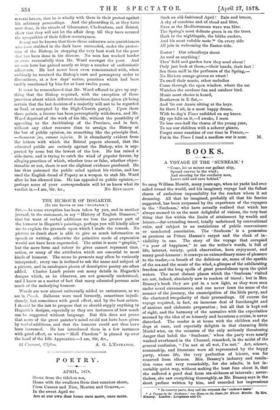THE HUMOUR OF HOGARTH.
[TO THE EDITOR OF THE "SPECTATOR."] Sin,—As some exception has been taken by you, and in another journal, to the statement, in my " History of English Humour," that for want of verbal additions we lose the greater part of the humour in Hogarth's paintings, perhaps you will kindly allow me to explain the grounds upon which I made the remark. No picture or dumb show is able to give as much information as speech or writing, otherwise the primitive mode of expression would not have been superseded. The artist is more "graphic," but the mere form and colour he gives cannot represent time, action, or many of the attributes which are essential to most kinds of humour. The scene he presents may often be variously interpreted ; every one is inclined to ask the name and subject of a picture, and in catalogues pieces of descriptive poetry are often added. Charles Lamb points out many details in Hogarth's designs which, as he observes, are not generally understood, and I know as a matter of fact that many educated persons miss much of the underlying humour.
Words are now almost universally added to caricatures, as we see in Punch. Balloons were used formerly, sometimes injudi- ciously, but sometimes with good effect, and by the best artists. I should be the last to propose that we should supply anything to Hogarth's designs, especially as they are instances of how much can be suggested without language. But this does not prove that more of the great painter's mind could not have been given by verbal additions, and that the humour could not thus have been increased. He has introduced them in a few instances with good effect, as where " Moll Flanders " is pinned up over the head of the Idle Apprentice.—I am, Sir, &c.,


































 Previous page
Previous page